Behind the art in North Seattle's new light rail stations
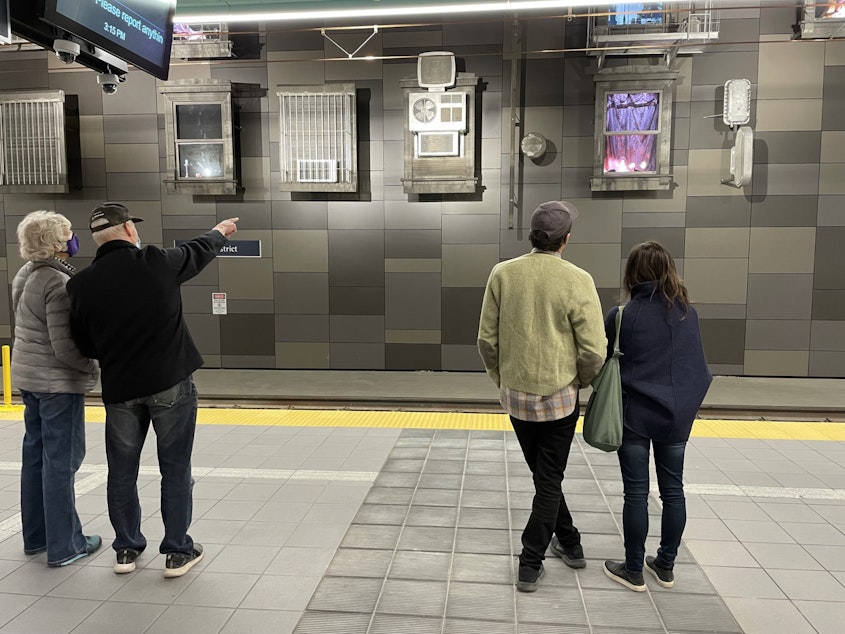
Sound Transit spent about $2.5 million on unique artwork to make waiting for trains more enjoyable at its three new North Seattle stations. Riders and neighbors got to see the artwork in person for the first time this week.
KUOW spoke to artists at each of the three stations to learn what’s behind their work.
University District
On the train platform in the University District, deep underground, people are all looking up at the wall. Mounted on the wall are sculptures of windows, fire escapes, air conditioners — the kinds of things you might see mounted on the outside of an apartment building.
The scene is the work of Daniel Mihalyo and Annie Han with Lead Pencil Studio in Seattle.
Mihalyo points to a small flag, mounted to one of the windows. The flag has started to wave.
Sponsored
“Yeah, it’s waving pretty steady – because the train is about to arrive," he says. "All that compressed air is like a bullet coming down the tunnel. It’s about seven pounds per square foot of wind velocity on objects. And there’s also a bird feeder that moves around a lot down there.”
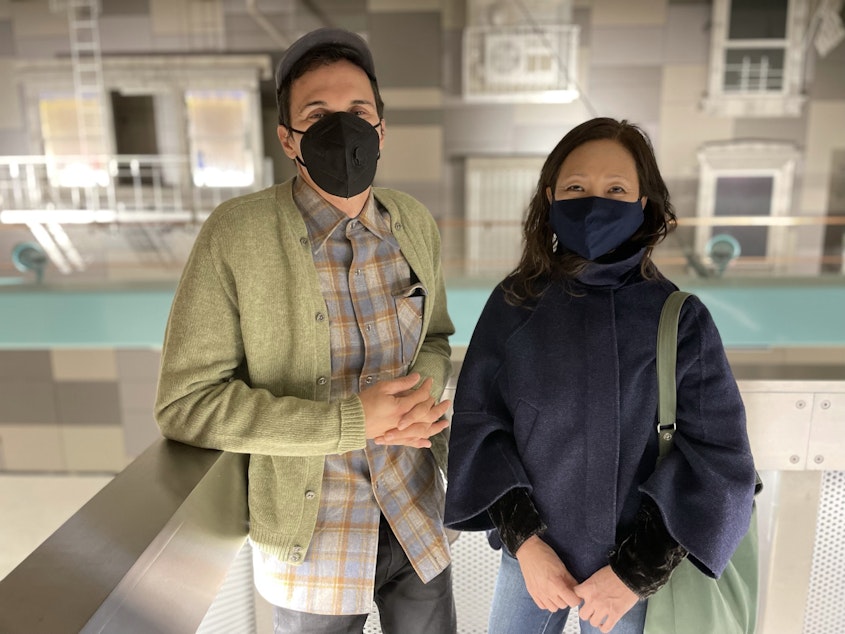
After the train leaves, people turn their attention to the windows themselves. Inside the windows are films of people doing things; the kind of things you might see through an apartment window in the University District.
“So you’ll see people sitting there reading, having conversations, dancing, playing music, eating – those kinds of things,” Han said.
Sponsored
The artists slowed down the film a little to give these activities a contemplative feel, in contrast to the fast-moving trains. In one window, a woman blows out a candle and the room goes dark.
By the end of October, this art piece will be fully loaded up with 18 hours of film. So you could show up on this platform every day and see something different each time.
Roosevelt
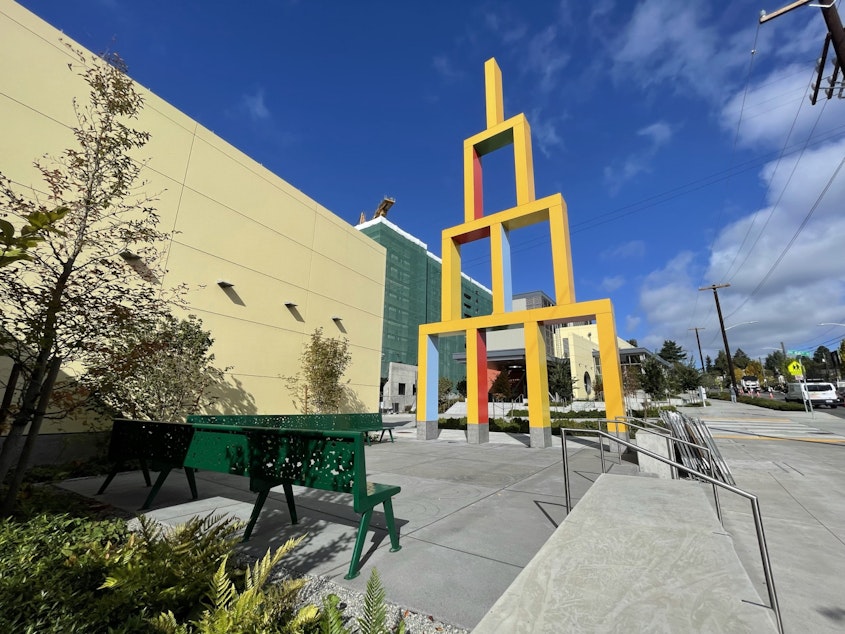
One stop north at Roosevelt Station, Miami-based artists Roberto Behar and Rosario Marquardt of R & R Studios are checking out their sculpture called “Building Blocks.” It’s part of a small plaza outside the station.
Sponsored
“We saw it under construction, but this is the first time that we've seen it complete with the little plaza that we designed," Marquardt said. "So we are super super happy and we can’t believe it that all the pieces are together.”
Sponsored
Behar and Marquardt have known each other since childhood, when they lived in Argentina. Today, they are business partners, and life partners. They finish each other's sentences, but in a loving, supportive way.
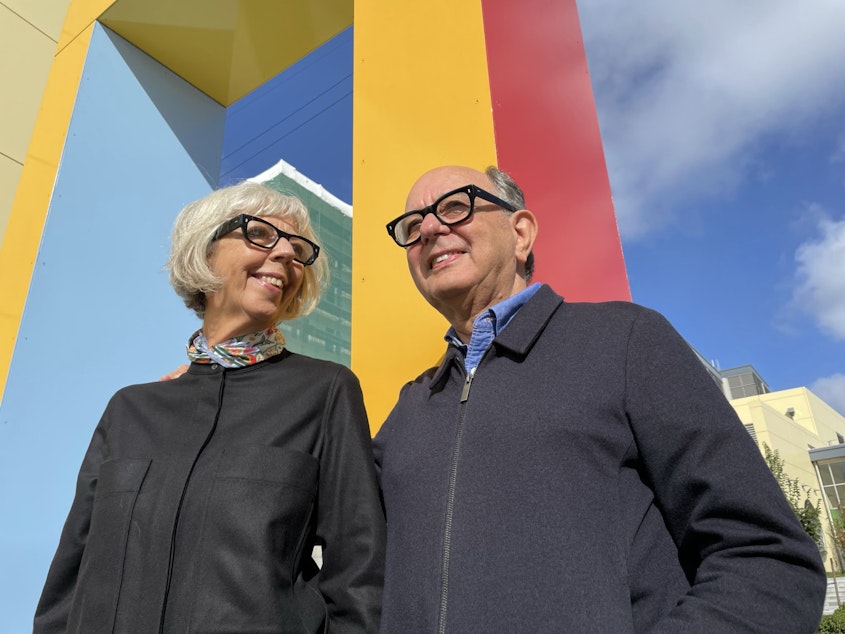
Behar grows animated as he describes the inspiration for "Building Blocks." He says he and Marquardt were looking for something that would be instantly recognizable to people from every part of the world because Seattle's residents come from all over the world.
“It’s interesting to discover that although coming from different places, we have memories of building blocks when we were kids,” he says.
“In every culture,” Marquardt adds.
Sponsored
“In every culture. We all played with building blocks. And we all dreamt to build something. Perhaps in our future, in a way. And it’s that aim, of building the future, in a better way..." Behar says.
“Of the possibility of building a dream, of building the future…” Marquardt adds, slipping effortlessly into his stream of words, then pausing for Behar to continue.
“That’s what this project would like to represent in a way, this possibility of building a dream,” Behar says.
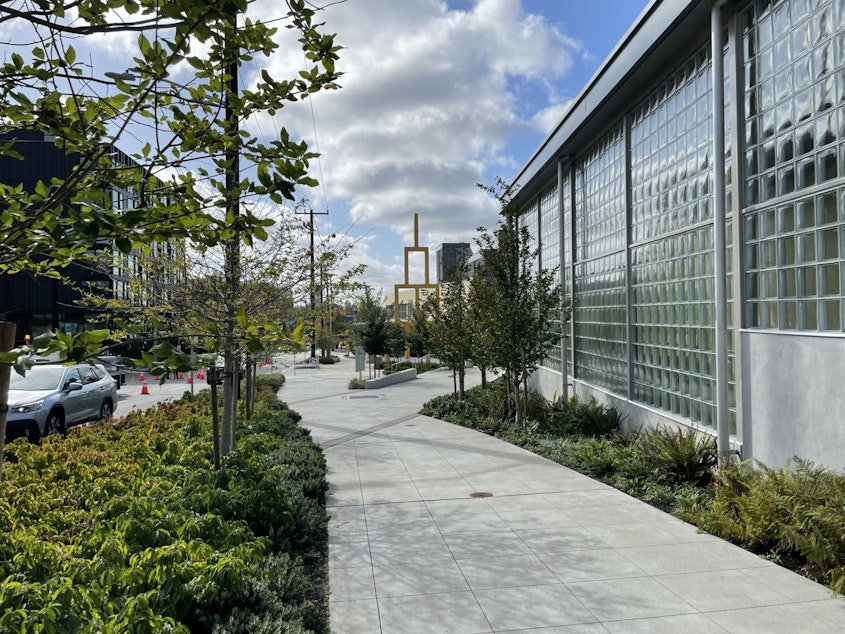
Behar and Marquardt say the little plaza at the base of the sculpture is as important as the sculpture itself. They wanted there to be a place for people to gather and meet. You know, “Meet me by the building blocks.” They said little public spaces like that are the building blocks that create a strong sense of community.
Sponsored
Northgate
Our final stop is Northgate station. There’s a long horizontal ribbon of art glass high above the platform. It’s a colorful, abstract piece, inspired by the energy and color of green darner dragonflies, which live around Thornton Creek nearby.
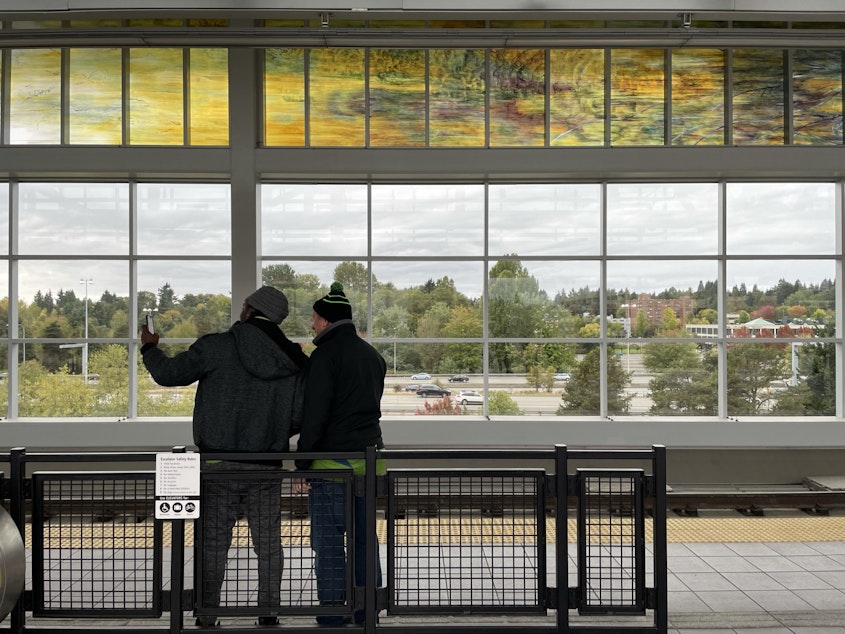
Mary Ann Peters of Seattle is the artist.
“Well, a dragonfly can go forward and backwards," Peters says. "I don’t actually know the velocity of its movement, but it’s very, very, very fast. It also can go sideways, so at some point, this matrix of subway stations will mimic the activities – the flight patterns – of a creature like a dragonfly. And I thought about that as just a simple way of understanding movement in urban settings.”
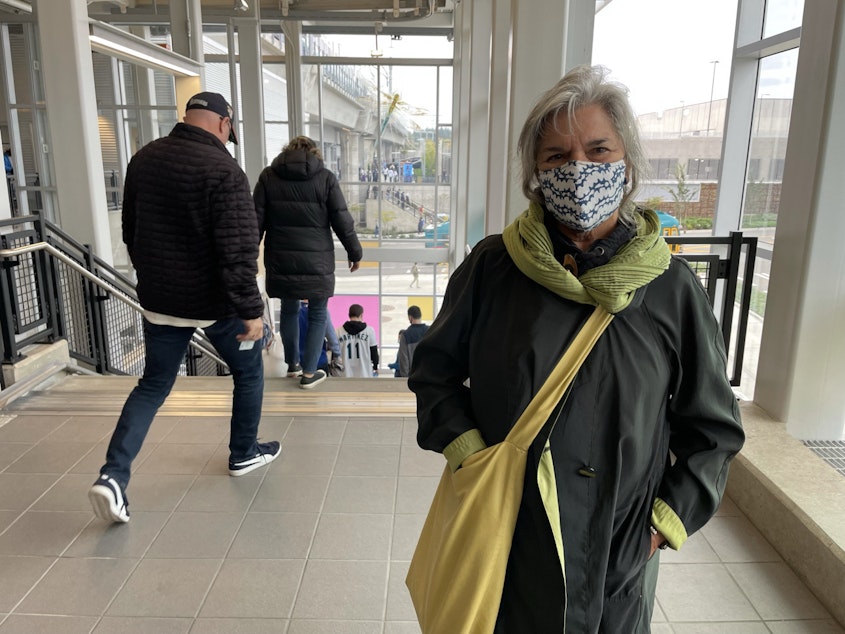
The artworks in these three stations, and some others that you'll see when you visit, are the products of 10 years of work.
Daniel Mihalyo says he’ll judge the pieces as successful only if they succeed in getting people to look up from their phones.
Judging by how transit riders are reacting, it seems to be working. At least during the first week after the stations opened.




